Paradise lost: Beautiful islands ruined by tourism

Their very geographical nature makes islands particularly prone to overcrowding – simply put, there’s not enough room for endless streams of tourists. Here are some of the most worrying examples of islands, many of which were once untouched, falling victim to their own popularity.
Phi Phi Islands, Thailand
Twenty years ago this little archipelago in the Andaman Sea really was paradise - and practically unknown - making it the perfect filming location for the big screen adaptation of The Beach, Alex Garland’s novel about the search for untouched backpacker heaven. Now as many as 5,000 people arrive each day on boat trips from the bustling mainland resorts of Krabi and Phuket, turning Maya Bay, the sheltered cove where much of the movie takes place, into a selfie-taking free-for-all. The situation has become so bad that Thai authorities recently announced plans to completely close Maya Bay for four months this summer (June 1 until September 30) to give the surrounding coral reef a chance to recover.
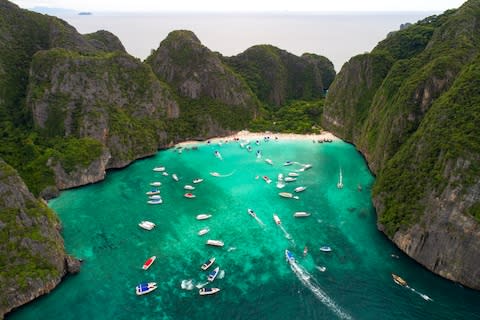
The tactic has been used on other Thai beaches but this will be the first time that Maya Bay is closed to travellers. “Parts of the Similans and Surin islands have been closed in the past to let the corals recover, but this is a first for Maya Bay,” explained Lee Cobaj, Telegraph Travel’s Thailand expert. “The closure will be in the middle of low season, when rain is pretty persistent, so I can’t imagine too many tourists will be turned away. But the beach is stupidly busy in high season so it’s good to see Thailand putting nature ahead of profits for once.”
Back when Leo was finding fame in Danny Boyle’s film, Thailand was still considered fairly “off the beaten track”. These days that couldn’t be farther from the truth. Last year 35.4m people visited the country, up from 5.3m in 1990. That’s a lot of unspoiled islands turning into tourists traps (like Ko Phangan, where an airport is currently under construction).
And further growth is expected. In 2018, Thailand is predicting 37.6m tourists will visit.

Boracay, The Philippines
While not as dramatic as Thailand’s, The Philippines has also experienced a surge in tourists. Just over one million went there in 1990 – last year that figure was 6.6m. And almost a third of those tourists - more than two million - visited one tiny island measuring just 3.98 square miles and with a resident population of just 30,000: Boracay. It’s all the more remarkable when you consider that the Philippines has 7,640 other islands to choose from, according to the most recent estimate from the country’s National Mapping and Resource Information Authority.
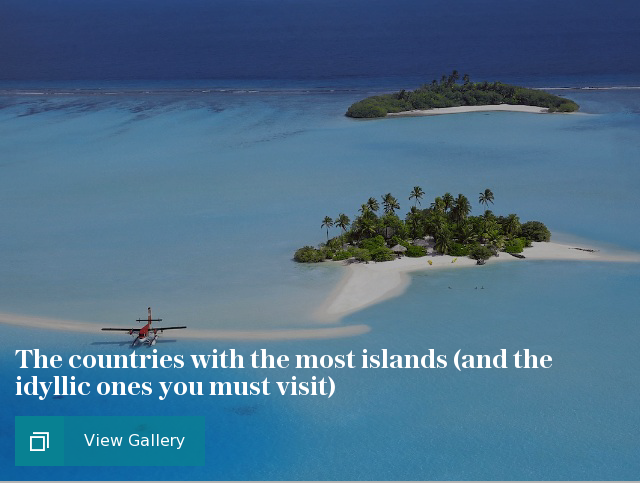
A decade ago, Boracay certainly was worth visiting. The magazine Travel+Leisure declared it the best island in the world back in 2012, thanks largely to the powder soft sand of White Beach. Today, according to Philippine President Rodrigo Duterte, it’s a “cesspool”. His verdict came after a video showing sewage flowing directly into Boracay’s blue waters went viral. The controversial leader castigated local authorities for permitting unchecked development and dispatched an emergency government taskforce to save the island from an ecological catastrophe. Inspectors found over 800 environmental violations.

Drastic measures are now planned, and Boracay will be closed to tourists for six months from April 26. It will provide time to overhaul the island’s creaking infrastructure, but don’t expect a new breed of sustainable tourism once it reopens. Only last month the Philippine government signed a deal with a Macau-based company to build a $500m beachfront casino.
Cozumel
This nugget of land off Mexico’s Yucatan peninsula was once a sleepy place, with just a few hundred residents, a couple of churches, and a spattering of Maya ruins.
Then came the cruise ships. A deepwater pier was built in the 1990s, allowing large vessels to dock (but damaging the island’s coral reef) and today it is the busiest cruise port outside of Florida, with 3.6m passengers arriving annually (almost all from Florida). To offer a comparison, Venice, where residents regularly come out in force to protest the presence of cruise ships, only welcomes 1.6m. Add that to the 541,598 who touch down each year at Cozumel Airport and it’s easy to see why the island makes our list.

Mexico is another country where tourism has grown exponentially in recent years. A staggering 39.6m visited in 2017 – up from just 17.2m in 1990. Which isn’t to say there aren’t unspoiled islands waiting to be explored. Our experts recommend Holbox, just 30 minutes from Cancun, another overcrowded tourist trap.

Venice
No round-up of overtourism would be complete without mentioning Venice, a cause célèbre for proponents of sustainable travel for years.
It has, of course, has been on tourists’ radars for centuries. But the 18th century nobles who came on their Grand Tours found a city full of real Venetians. John Moore, in A View of Society and Manners in Italy, 1781, wrote of “such a mixed multitude of Jews, Turks and Christians; lawyers, knaves and pick-pockets, mountebanks, old women, and physicians; women of quality, with masks; strumpets barefaced; and, in short, such a jumble of senators, citizens, gondoleers, and people of every character and condition, that your ideas are broken, bruised, and dislocated in the crowd, in such a manner that you can think, or reflect, on nothing…”
Visitors today will find nothing but other tourists. Indeed, while 22 million travellers visit the city each year, the resident population has dwindled to just 50,000. And according to local media, if depopulation were to continue at its current rate, Venice won’t have a single resident by 2030.

New measures have been put in place to prevent the largest cruise ships from visiting, but - as outlined above - they account for just a fraction of Venice’s annual arrivals. Authorities are also trying to tackle the problem by banning new hotels and fast food restaurants. Even an entry fee for St Mark’s Square was recently suggested.

Our solution? Try an uncrowded alternative. Italy has dozens of fine cities that aren’t creaking under the weight of tourists. How about Bologna, the capital of Italy’s tastiest region, Emilia-Romagna? Or vibrant and atmospheric Palermo, which still bears the unique stamp of its former Arab, Norman and Spanish rulers?
Bali
Indonesia welcomed 13.7 million overseas tourists in 2017 - up from around 2.2m in 1990. And around 1 in 3 of those (4.5m) went to Bali.
Its emergence as a packaged paradise for international consumption began in 1963, with the construction of the Bali Beach Hotel in Sanur. Until then just three hotels existed on the entire island. But many more would follow and in 1970 the construction of Ngurah Rai International Airport opened the floodgates. Sanur remains a tourist hub, but it has been joined by Kuta, Seminyak, Ubud, and newer developments like Nusa Dua and Pecatu.
The surge in visitors has contributed to the island’s environmental problems. Late last year Bali declared a “garbage emergency” after several of the country's most popular beaches were inundated with a rising tide of plastic waste. Workers sent in to Jimbaran, Kuta and Seminyak beaches, among the busiest, were carting off up to 100 tons of junk each day at the peak of the clean-up.
It isn’t only tourists to blame - fly-tipping by indifferent residents is a major factor - but they certainly aren’t helping matters.
According to a 2002 survey by the National Institute of Aeronautics and Space, there are 18,306 other Indonesian islands to try. We recommend Sumba. Natalie Paris writes: “This remote outpost, an hour’s flight from Bali, is now accessible thanks to Nihiwatu, a luxury resort that takes the best of the island’s fascinating tribal culture and accommodates guest in lodges built like Sumbanese houses, with distinctive, tall thatched roofs that poke up above the treetops like witches’ hats.”
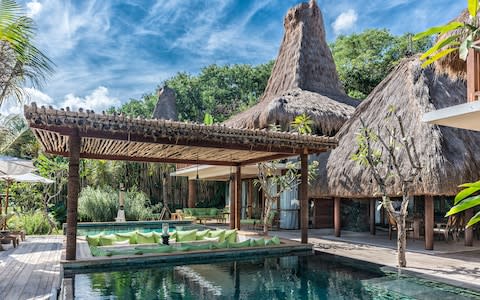
Big Major Cay, The Bahamas
A curious colony of pigs live on this island - besides a few goats and stray cats, they are the island's only permanent inhabitants. How did they get there? The most convincing theory is that they were taken there to boost tourism (another theory is that sailors dropped them off, intending to come back and cook them, but never returned).
But the ploy worked too well. Boat trips to see the cute little porkers have become wildly popular, with each arrival apparently determined to outdo the last to capture that perfect Instagram snap. Disgracefully, seven of the pigs died last year, with tourists accused of feeding them alcohol and trying to ride on top of them. This is one seaside wildlife experience you ought to skip - leave the pigs to their paradise. Instead, go and see the wild horses of the Camargue, or the kangaroos of Australia’s Cape Le Grand National Park.
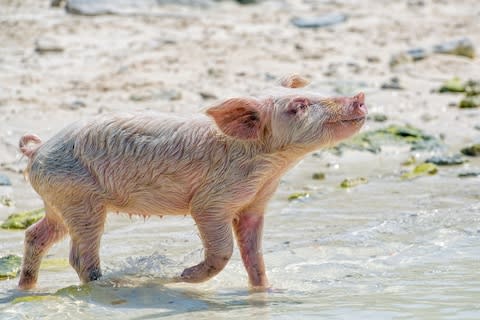
Mallorca
To say Mallorca has been spoiled isn’t quite fair. The Serra de Tramuntana mountain range in the north of the island is still magnificent, and on a hike to the mountaintop fortress of Castell d’Alaró last summer this correspondent saw barely a soul. But with Mallorca now receiving around 10 million annual visitors, parts of the island are undoubtedly feeling the strain. The spectacular road to Sa Calobra becomes a traffic jam in peak season, while the capital Palma can become stiflingly busy - especially when cruise ships disgorge their passengers (as many as 500 cruise ships now dock in the city each year, depositing up to 22,000 people a day). The capital was the scene of an anti-tourist protest last September, with demonstrators demanding holidaymakers “go home”.

Local authorities are well aware of the problem and are trying to fix it by doubling the tourist tax during peak season. Raising the levy to as much as €4 per person per day, depending on the type of accommodation used, will help fund ecological projects, they say, as well as encourage holidaymakers to visit out of season. Other proposed measures have included tougher restrictions on Airbnb and a ban on tourists arriving by car.
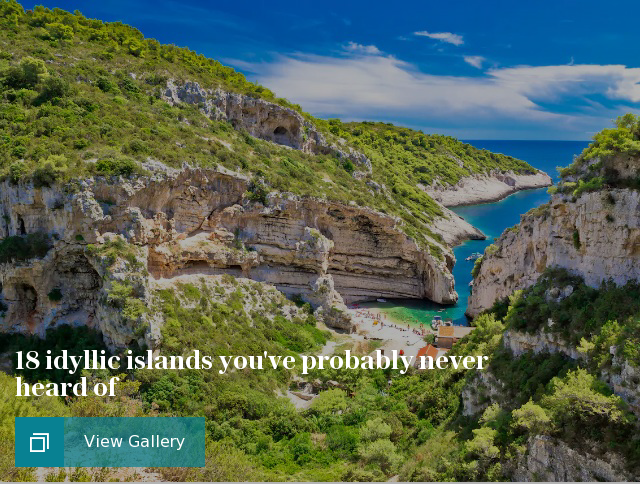
Telegraph Travel’s tip for a quieter Spanish island? Off the coast of Galicia lies the Cíes Islands, billed as the region’s answer to the Caribbean - and perfect for those in search of isolation. “There are several walking routes and the islands are popular with hikers and birdwatchers, particularly in the autumn,” explains Annie Bennett, our Spain expert. “Part of the Galician Atlantic Islands National Park, the land and the surrounding sea are highly protected. Visitors are limited to 2,200 a day; there are no hotels – only a campsite – and just a couple of basic restaurants. There are no bikes, let alone cars.”


